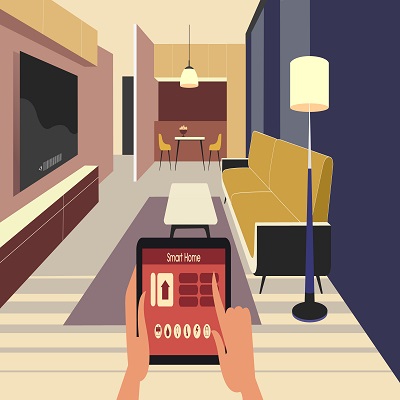In today’s world, home automation has become a popular trend, with promises of energy savings, convenience, and efficiency. The ability to control various aspects of our homes through mobile devices or voice commands is undoubtedly appealing, but have we considered the potential drawbacks? As the founder of WhizNets, I have explored the implications of full home automation and why I have chosen a more balanced approach for my own living space.
The Push for Energy Efficiency
The primary driving force behind the push for home automation is the promise of energy efficiency. Studies and white papers abound, touting the benefits of reducing energy consumption, lowering carbon footprints, and ultimately saving money. With our ever-increasing demand for energy, it’s clear that finding ways to use it more efficiently is crucial.
However, as I delved into the world of home automation, I realized that the focus on energy savings often overshadowed other important considerations. While it’s undeniably valuable to have the ability to control lighting, temperature, and appliances remotely, I couldn’t ignore the potential impact on our physical and mental well-being.
The Health Impacts of Full Automation
As I pondered the implications of full automation, I couldn’t help but wonder about the potential health impacts. What happens when we relinquish the physical tasks of flipping switches, adjusting settings, and performing other routine household activities? In embracing full automation, are we inadvertently sacrificing opportunities for natural physical and mental exercise?
Consider the simple act of getting off the couch to turn off a light or adjust the thermostat. These seemingly mundane tasks actually provide valuable moments of movement and engagement. By relying entirely on automation, we risk losing these opportunities for physical activity and mental alertness. It became clear to me that a balanced approach to home automation was essential to preserve these aspects of our well-being.
Striking a Balance
Rather than embracing full automation without reservation, I advocate for a balanced approach that leverages the benefits of technology while preserving our physical and mental engagement with our living spaces. This balanced approach encompasses two key principles:
- Awareness and Engagement: Home automation should serve as a tool to make us more aware of our energy usage and encourage us to take proactive steps to conserve energy. By providing insights and alerts, automation can prompt us to make conscious decisions about our energy consumption, ultimately leading to more sustainable habits.
- Occasional Automation: While being mindful of our physical and mental well-being, there are undoubtedly areas of our homes where complete self-automation may be beneficial. For example, walk-in closets and bathrooms are spaces where automation can operate seamlessly without sacrificing our need for physical activity and engagement.
By integrating these principles, we can achieve the best of both worlds: the energy-saving benefits of automation and the preservation of our physical and mental well-being. It’s about finding a harmonious balance that enhances our lives without compromising our health.
The Role of Technology and Nature
At WhizNets, we recognize the importance of integrating technology with nature to create a living environment that is both sustainable and enriching. Our IoT solutions are designed to enhance the way we interact with our surroundings, promoting a harmonious coexistence between technology and nature.
We believe that technology should complement and support our connection to the natural world, rather than replace it entirely. By embracing a balanced approach to home automation, we can maintain a sense of harmony with our environment while reaping the benefits of modern conveniences.
Living with Intention
Ultimately, the decision to embrace home automation should be driven by intention and mindfulness. It’s about understanding the potential impacts on our well-being and making informed choices that align with our values and lifestyle.
As we navigate the intersection of technology and living spaces, it’s essential to consider the broader implications of full automation. By embracing a balanced approach that prioritizes our physical and mental well-being, we can create living environments that are not only efficient but also nurturing and sustainable.
In Conclusion
As we weigh the benefits and drawbacks of home automation, it’s clear that a balanced approach is essential for creating living spaces that enhance our lives without compromising our health. By embracing the principles of awareness, engagement, and occasional automation, we can harness the benefits of technology while preserving our connection to the natural world.
